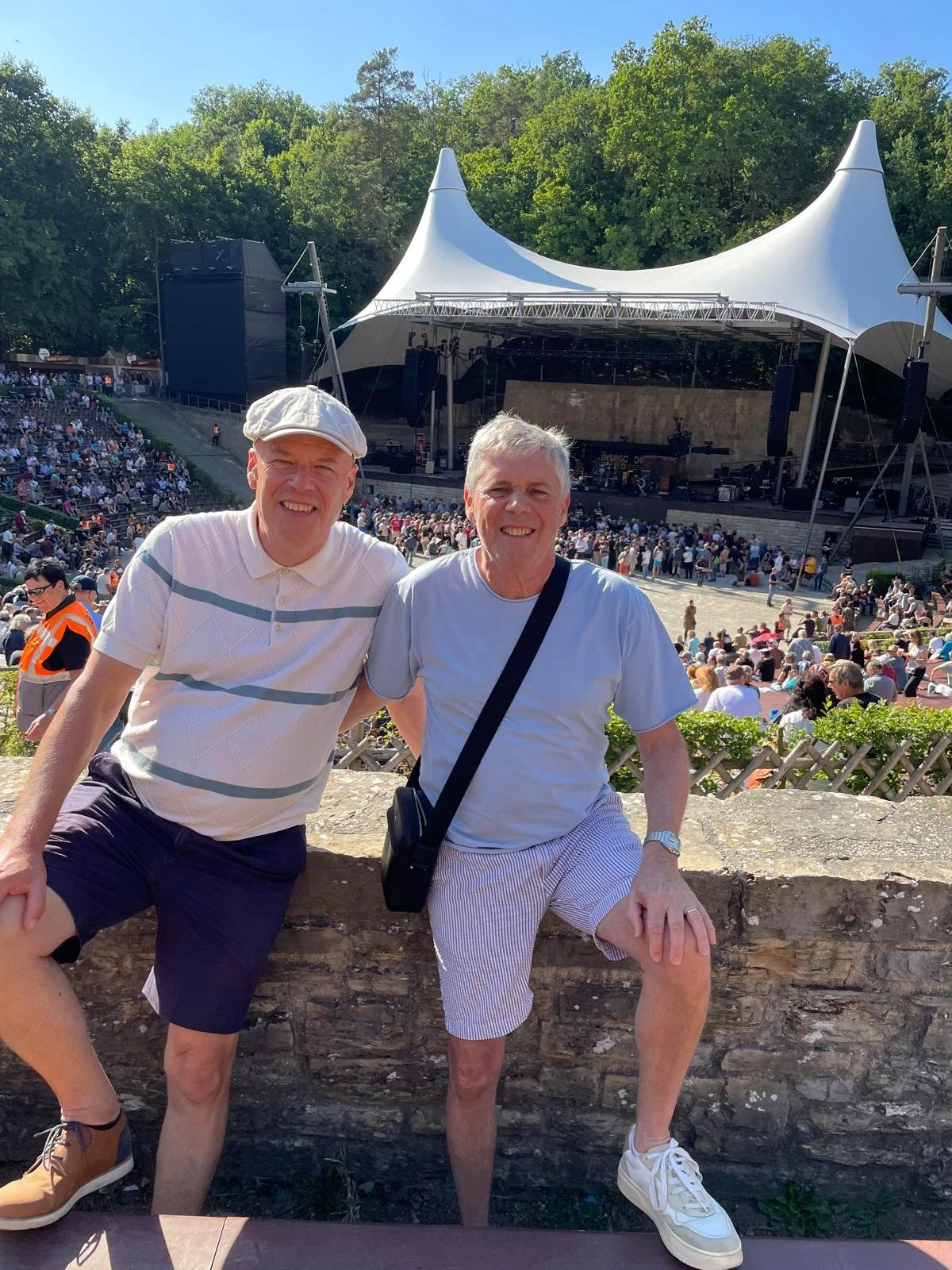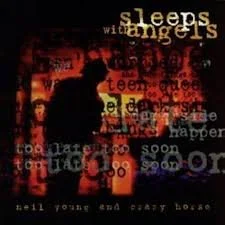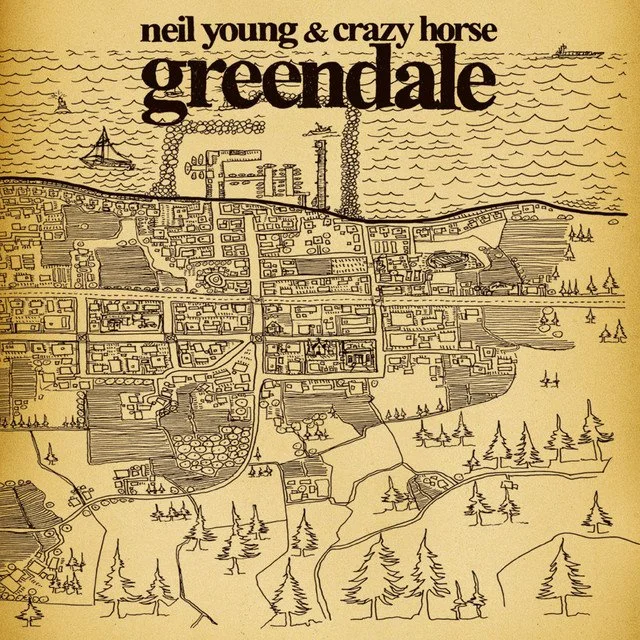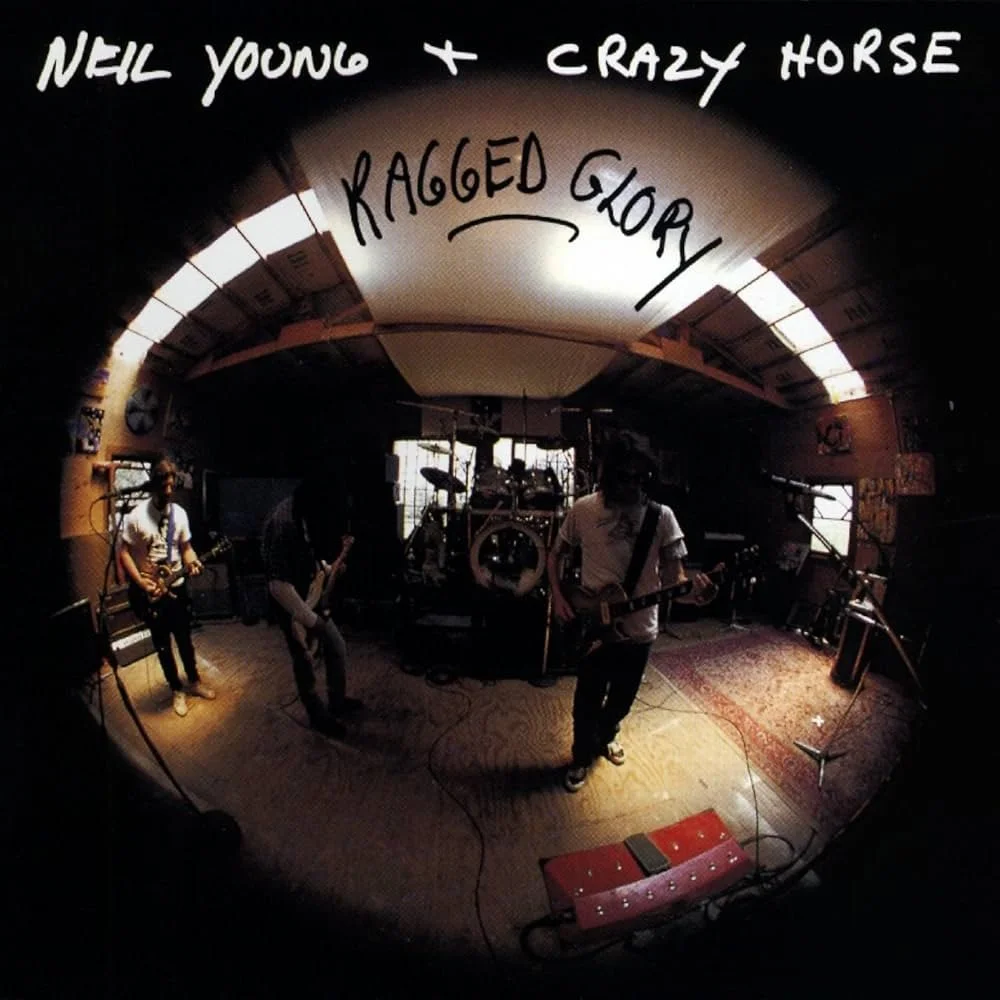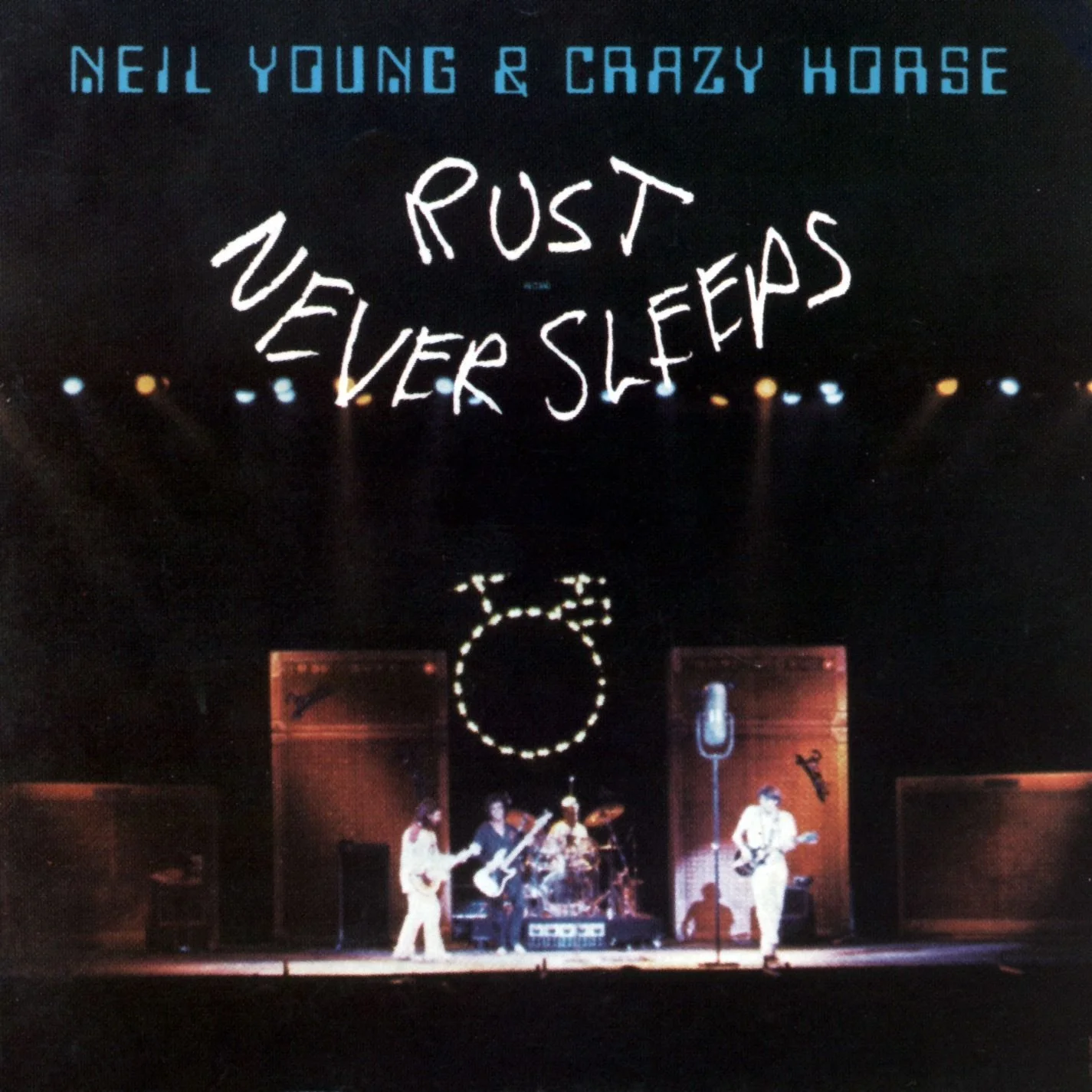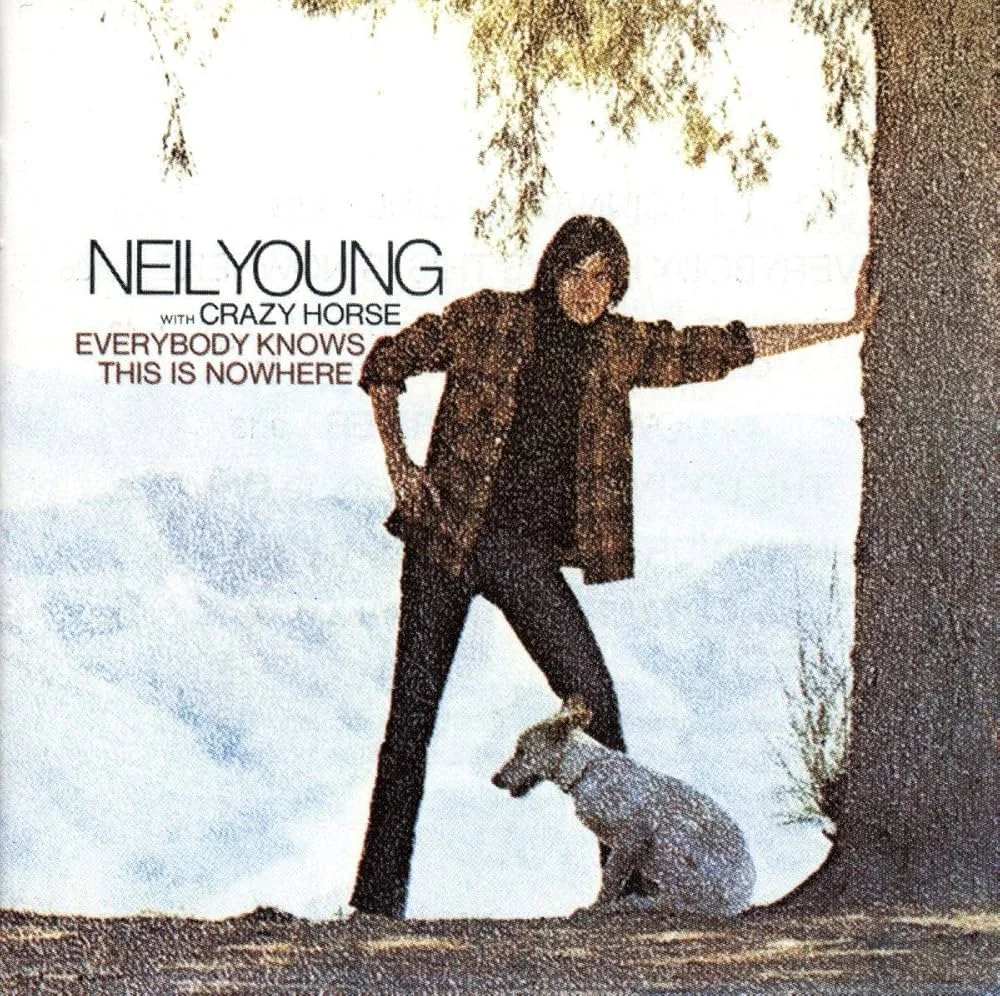2025 - The Summer of Neil
With his concerts taking place this summer at much heralded venues such as the Pyramid Stage at Glastonbury, Hyde Park London, the Montreux Jazz Festival, Berlin’s Amphitheatre Wald Bühne and Dublin’s Malahide Castle, all en route to the Hollywood Bowl, nobody could accuse soon-to-be octogenarian Neil Young of scaling back his live performances in old age!
Such momentous occasions give rise to reflections on his magnificent sixty-year career and considerations as to what have been his greatest studio albums over that long period, in full knowledge that views on such a ranking will spark heated debate amongst followers of the Toronto-born legend.
Further below you will find one man’s take on twelve albums that are standouts. First though, and as a way of highlighting the sheer breadth of the songwriting genius of this artist, I have compiled a greatest hits playlist of songs that are not even to be found on those top twelve albums. Maybe you would like to add your own choices…
A quick scan of the albums the songs on the playlist are taken from will give the discerning Young follower a hint as to what albums are left for the top twelve positions. So, here they are, the top twelve!
#12: Living With War (2006)
His sixtieth birthday not long behind him Neil is not holding back as he vents his anger on the Bush regime. Tracks like “Let’s Impeach the President” and “Lookin’ for a Leader” indicate where his wrath is aimed. This three-time Grammy-nominated album showcases Neil at his most belligerent. Even without his trusty Crazy Horse backing band, the songs are belted out with gusto as choirs join in to provide optimism on the choruses of Dylan-inspired “Flags of Freedom” and closer “America the Beautiful”. An essential late period work.
#11: Sleeps With Angels (1994)
The final words of Kurt Cobain’s suicide note were Neil Young lyrics from the album Rust Never Sleeps (more of which later) so Neil is here paying his respects with the grungy title track (he’s always on someone’s mind). Immediately followed by standout track “Western Hero” which reflects on other heroes who left too soon the album reaches a 14 minute peak with “Change Your Mind”. It’s possibly the most unlikely Crazy Horse album in style, but played a huge part in attracting new fans as he soon was to team up with Pearl Jam for the following year’s Mirror Ball.
#10: Harvest Moon (1992)
Harvest Moon represents a return to the middle of the road, which he had left twenty years earlier in search of something more interesting. If the waltzy title track itself doesn’t evidence this then the opening two songs surely do, the beautiful ode to then wife Peggy “Unknown Legend” followed by the contemplative “From Hank to Hendrix”, both songs gems of the softer side of Neil. A magnificent start to an album on a par with Harvest’s opening two tracks two decades before. And the similarities don’t stop there as the band on Harvest, the Stray Gators and backing singers all re-formed for the recording of the ten songs on the successor two decades later.
#9: Greendale (2003)
Neil rounded up his trusty Crazy Horse members Ralph Molina and Billy Talbot for this - what many would consider surprise - entry in our top twelve. More a TC Boyle-esque short story than a collection of songs, Neil is in ranting mode again, venomously launching attacks on corporate giants and the mass media whilst issuing a rallying cry to protect the environment, often through the aptly named character Sun Green. It is no surprise given the direction of the political world in the days since this album’s release that Neil still includes two of its tracks on his recent live sets. “Be the Rain” - the track that most encompasses the message of this gem of an album with its simple call to ‘Be the ocean when it meets the sky (you can make a difference if you really try)’ - is a standout. The second 21st century album on this list and like the aforementioned Living with War this is essential.
#8: Tonight’s the Night (1975)
The first 1970s album in our chart and certainly not the last, this is classic Ditch Trilogy Neil. The songs here were all recorded in preceding years, which is why Danny Whitten who passed in November ‘72 can be heard on “Come on Baby Let’s Go Downtown”, which re-surfaces here after its 1970 Live at Fillmore release. The musicians on this album are the core members of Neil’s two most trusted bands The Stray Gators and Crazy Horse, with the mercurial Nils Lofgren too making several appearances. For the album’s purposes they are now named The Santa Monica Flyers. It is a ramshackle record that veers all over the road to use Neil terminology. From the quivering voice of the title track through the seemingly preachy classic “Tired Eyes” to the gorgeous “Albuquerque” let us not let Neil kid us that this is not indeed some of his finest work despite the haphazard nature of its release.
#7: Ragged Glory (1990)
There are times in Neil Young’s life when he needs ‘the Horse’ and the sessions at his California Broken Arrow ranch with the classic Crazy Horse line-up (Talbot/Molina/Sampedro) was certainly one of those times. What stomping grungy rocking sessions they must have been as the Ragged Glory track selection was completed with classics that would form part of live sets for decades to come. It is the ultimate mid-period Young album as the 44 year old trades guitar licks with Sampedro backed by a relentless Molina/Talbot beat. The opener, the classic ode to his farm “Country Home” sets the scene and eight to ten minute follow-ups like “Over and Over”, “Days That Used to Be” and “Love to Burn” continue the relentless charge of the Horse over its hour long duration. Aficionados of this album would love the recently released live set Way Down In The Rust Bucket, which includes practically the whole of this glorious rock album.
#6: Rust Never Sleeps (1979)
Neil finishes the seventies on a high! With his trusted producers David Briggs and Tim Mulligan on board and the now classic Crazy Horse line-up re-convened for their second studio outing Young’s tenth album is littered with classic moments. So many in fact that a rank of six seems miserly. Many of the songs on this album were recorded four years earlier for the Zuma sessions, and appeared here for the first time highlighting the prolific nature of Young’s songwriting in first half of that decade. The track “Powderfinger” took Young eight years to complete. It is a monster, arguably his greatest song and greatest guitar riff. We can all offer our own interpretation. Personally, I like to see it as an attack on colonialism and the senseless loss of young lives in war, making the song as relevant today as it ever was. I continue to marvel at its brilliance some fifty years after it was written. Side one is acoustic, and “Powderfinger” opens the electric side two. Both sides of Neil close the decade with Neil musing that it’s better to burn out than to fade away. Magnificent.
#5: After the Gold Rush (1970)
Announcing his permanent arrival on the stage of singer songwriters, but one just as at home with a softly strummed ballad as a rock song, it is the softer songs that dominate. From the magnificent title track where he already seems to be predicting environmental destruction, through the beautiful “I Believe in You” and “Birds” and the song he wrote for Graham Nash on that bandmate’s split with Joni Mitchell, “Only Love Can Break Your Heart”. The original Crazy Horse with Danny Whitten and Nils Lofgren alongside Ralph and Billy provide the musical backdrop so were probably pleased when anti-slavery rocker “Southern Man” allowed them to let rip a little. Strange to think that on its release he was only twenty four with so much more to come.
#4: Zuma (1975)
Danny Whitten died in 1972, Neil Young’s Crazy Horse guitar-playing sidekick from the late sixties and early seventies. His song “I Don’t Wanna Talk about It” lives on as a hint of what might have followed. After the turmoil of the years 73/74 Neil was lucky to be offered a potential replacement in the form of Frank ‘Poncho’ Sampedro, who joined the Horse for Zuma and stayed for nigh on forty years allowing the band to develop that trademark sound with Neil thrashing his trusty Old Black with their unwavering support. Zuma is a classic album. Opener “Don’t Cry No Tears” is Young finally getting over his break-up with Carrie Snodgress. “Danger Bird” and the explosive “Barstool Blues” hint at the greatness to come on side two in the form of fan favourite “Cortez the Killer” as Young again - as he would do over the years - shows his distaste for the exploiters and destroyers of native communities. ‘And the women all were beautiful and the men stood straight and tall.’ Devastating comment on imperialism.
#3: Harvest (1972)
1972, a 15 year old boy visits his friend, who is sitting on the sofa with an album cover in his hands whilst the disc plays a song about a man needing a maid. Some images stay forever. What an introduction to Neil Young. Vaguely aware at the time of his existence, this was when the seeds were planted for a lifelong relationship. The album itself is not too different in tone from the Goldrush of two years earlier, but in a way the songs are stronger with the Stray Gators and in particular Kenny Buttrey’s drumbeat and Ben Keith’s slide work giving the album a much more complete feel. From the auspicious beginnings of “Out on the Weekend” through “Harvest” to the song that gained him a million fans, “Heart of Gold”, we are in the presence of an album for the ages. Once “The Needle and the Damage Done” and “Old Man” have weaved their magic his job is done. Superstardom awaits, the thought of which doesn’t interest him too much, and leads us to…
#2: On the Beach (1974)
Harvest was recorded during his relationship with ‘the actress’, the follow-up was recorded when the two were in break-up mode and also in the wake of a demanding and ultimately draining series of live dates which resulted in the Time Fades Away live album. Emerging from the debris, Young hits not so much ditch form as hard shoulder, spurning commercial hits but nonetheless making an album to stand alongside his very best. Gathered together are some Stray Gators, some Crazy Horse amongst others. Holding the whole album together is the title track which showcases some of his most sublime and controlled guitar playing and is worth the entrance fee alone. “Motion Pictures” and “See the Sky About To Rain” hint that the middle of the road wasn’t so far away, but “Ambulance Blues”’ Nixon reference is an indicator that Neil isn’t averse to ruffling a few feathers. ‘He never met a man who told so many lies’. As apt today as it ever was.
#1: Everybody Knows This Is Nowhere (1969)
For our top album why not go back to the very beginning when Neil, Billy, Ralph and Danny made that first Crazy Horse album and within it conjured up no less than three all-time Neil Young classics where the template for the harder side of Young’s songwriting was originated. It may be 56 years old now but “Cinnamon Girl” performed live these days sounds as fresh as it does on the opening three minutes here (Danny joining in the vocal). “Down By the River” closes side one in epic fashion and sets the standard for all the ten minute long Crazy Horse rockers to come, but the pièce de résistance which sends this album into 10/10 territory is surely the wonderful “Cowgirl In the Sand” with some of his most mesmeric guitar work together with Whitten, sounding even better on the Live at Fillmore East album that followed. Who knew in 1969 that we were in the presence of greatness?
And so, this Neil Young appreciation closes, but let us just remind ourselves of twelve tracks, one from each album, that would be added to our Greatest Hits:
Living With War - “Flags of Freedom”
Sleeps With Angels - “Western Hero”
Harvest Moon - “From Hank to Hendrix”
Greendale - “Be the Rain”
Tonight’s the Night - “Tired Eyes”
Ragged Glory - “Country Home”
Rust Never Sleeps - “Powderfinger”
After the Gold Rush - “After the Gold Rush”
Zuma - “Cortez the Killer”
Harvest - “Alabama”
On the Beach - “On the Beach”
Everybody Knows This Is Nowhere - “Cowgirl In the Sand”
No doubt you have your own opinions. Why not share them below?

